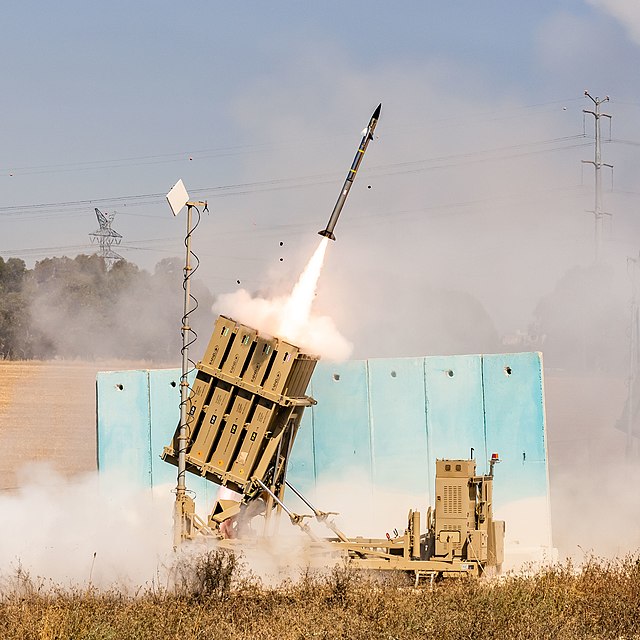Iron Dome Defense System: A Comprehensive Overview

Introduction
The Iron Dome is an Israeli mobile all-weather air defense system developed by Rafael Advanced Defense Systems and Israel Aerospace Industries. It is designed to intercept and destroy short-range rockets and artillery shells fired from distances of 4 kilometers (2.5 mi) to 70 kilometers (43 mi) away, targeting those that would land in Israeli populated areas.

Technical Specifications
- Type: C-RAM and short-range air defense system.
- Place of Origin: Israel.
- Service History: In service from 2011 to present.
- Used By: Israel Defense Forces.
- Designer: Rafael Advanced Defense Systems and Israel Aerospace Industries.
- Unit Cost: $50 million per battery; $100,000–150,000 per interception.
- Specifications:
- Mass: 90 kg (200 lb).
- Length: 3 m (9.8 ft).
- Diameter: 160 mm (6.3 in).
- Detonation Mechanism: Proximity fuze.
- Maximum Speed: Mach 2.2.
- Launch Platform: Three/four launchers, each carrying 20 interceptors.

Operational History
The Iron Dome was declared operational and initially deployed on 27 March 2011 near Beersheba. It successfully intercepted a rocket launched from Gaza for the first time on 7 April 2011. By late October 2014, the Iron Dome systems had intercepted over 1,200 rockets.
Background
The need for the Iron Dome arose from the consistent rocket attacks on Israeli population centers from neighboring regions. Hezbollah in Lebanon and Hamas in Gaza have fired thousands of rockets into Israel, posing significant security challenges. The 2006 Second Lebanon War saw around 4,000 Hezbollah-fired rockets landing in northern Israel. Similarly, from 2000 to 2008, over 8,000 projectiles were fired into Israel from Gaza.
Development and Funding
The initial funding and development of the Iron Dome were undertaken by Israel. However, the United States has significantly contributed to its funding. From 2011 to 2021, the US contributed a total of US$1.6 billion to the Iron Dome defense system, with an additional US$1 billion approved by the US Congress in 2022.

Specifications in Detail
- Detection & Tracking Radar: Built by Elta, a subsidiary of Israel Aerospace Industries.
- Battle Management & Weapon Control (BMC): Control center developed by mPrest Systems.
- Missile Firing Unit: Launches the Tamir interceptor missile, equipped with electro-optic sensors and steering fins for high maneuverability.
Comparison to Typical Battery
Unlike a typical air defense missile battery that has all its components at one site, the Iron Dome is designed to deploy in a scattered pattern. Each launcher, containing 20 interceptors, operates remotely via a secure wireless connection.
Plans for Co-production with the US
Given the significant US investment in the Iron Dome, there have been calls for technology transfer and co-production of Iron Dome in the US. In July 2014, it was announced that Raytheon would be the major US partner in co-production of major components for the Iron Dome’s Tamir intercepting missile.
Energy Weapons
While Iron Dome has proven effective, concerns remain about its ability to handle larger arsenals from groups like Hezbollah. Directed-energy weapons, such as lasers, are being investigated as a complement to Iron Dome to provide a more cost-effective solution.
C-Dome
In October 2014, Rafael unveiled a naval version of the Iron Dome called C-Dome.
Note: This is a summarized version of the detailed information available on the Iron Dome. For a comprehensive understanding, it’s recommended to refer to the original sources.